I love my perennial veggies. My whole food garden, each spring, is designed around the little edibles that emerge, many as new unplanned-for surprises.
Corn mache is among the first edibles to appear in the garden. I let them go to seed each spring so they can come up around the garden next winter. If you haven’t tried corn mache, it’s a hearty salad green you’ve likely seen in fancy restaurants. It can be eaten as part of your raw salad or you can stir fry it. We also throw it in smoothies for an extra jolt of green veggie vitamins.
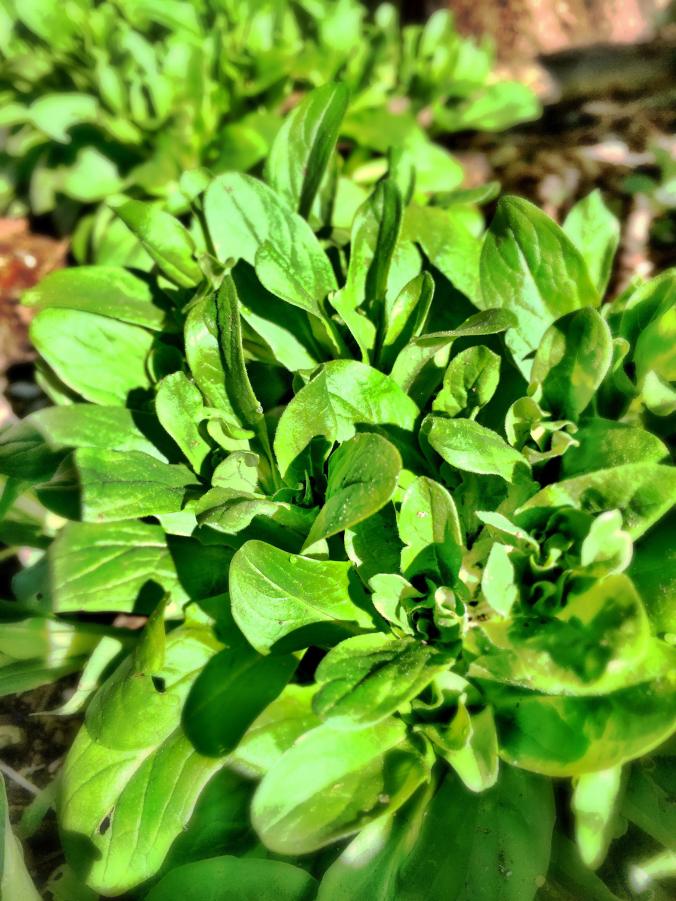
Jerusalem artichokes: Plant them once and you’ll get them year after year as you’re sure to miss a few tubers during harvest. These can be harvested all winter long.
Walking onions: These are one of my favorite perennial veggies for the garden. They’re an heirloom variety of onion that produces a long scape with an onion flower on the end that turns into a bulb. Just let it reach for the sky and then bend over and plant itself right into the earth again, walking its way around your garden. This is why my garden changes design each year. I modify the shape and configuration of beds based upon where the onions have walked and where other vegetables have reseeded themselves. I simply weed around my perennial food.
You eat the walking onion greens, which are a full-bodied onion flavor, very strong, and can be used as an onion substitute in any recipe.
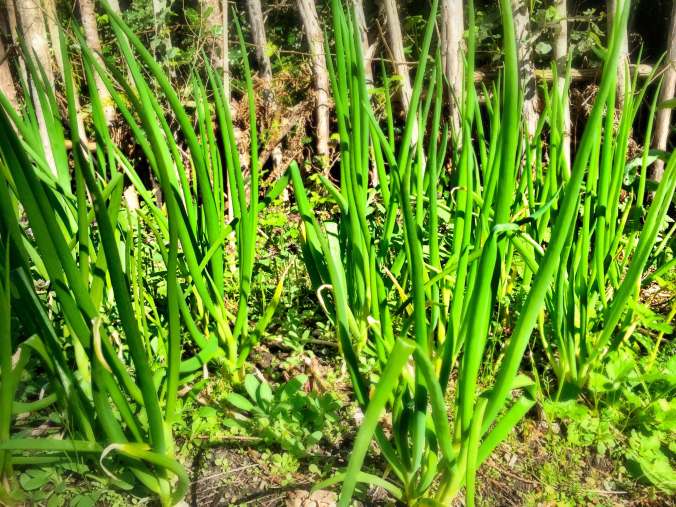
Chives, Garlic, Shallots: Chives are a perennial, so just plant a row and they’ll reappear each spring. Put them in your perennial beds, too, as their beautiful allium-family purple-blue flowers add color to every garden. I also leave a few garlic and shallot heads in the garden to see if a few will sprout the next spring, and of course they always do.
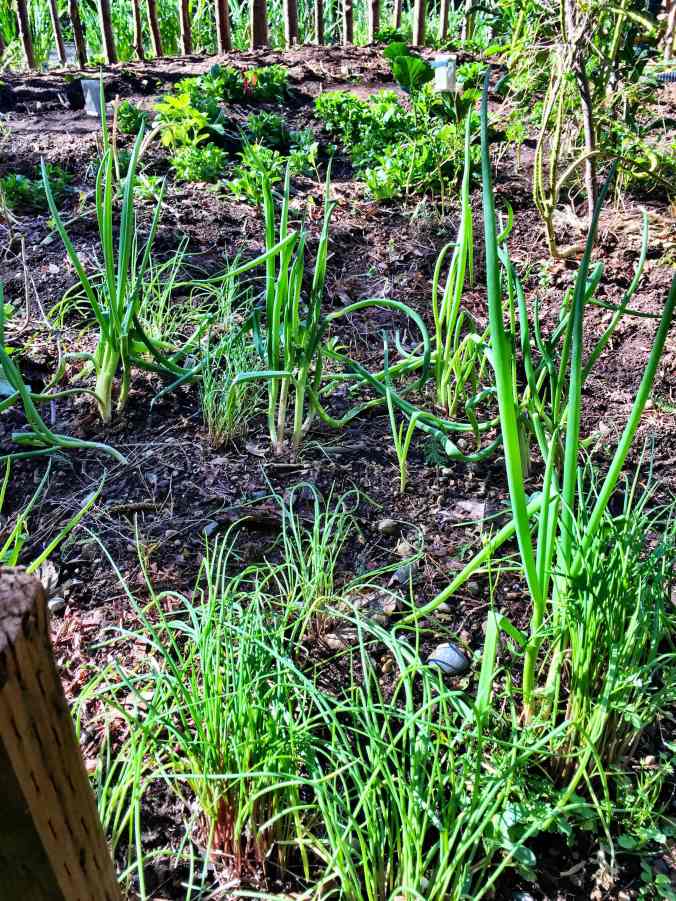
Brassicas: Here’s a confession — I have kale plants in my vegetable garden that are 2 and 3 years old. They look like dinosaurs but I just keep pinching them back and they keep producing leaves and little flower heads which are perfectly edible. They’re like mini broccolis and go beautifully in a frittata. Letting a few flower, too, adds color and pollen/nectar for our honeybees.
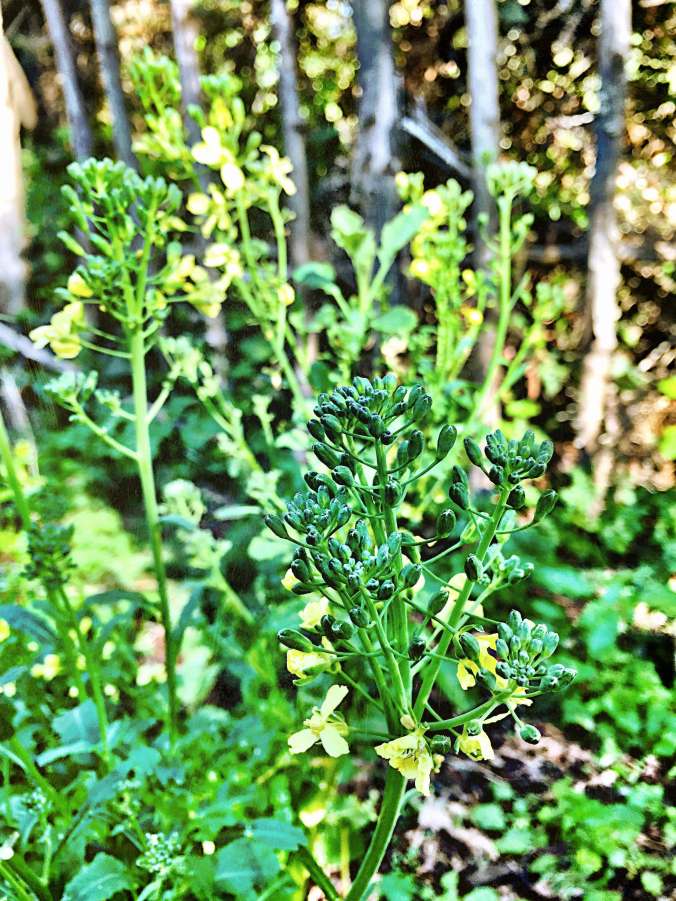
Arugula: You never have to replant arugula if you plant it once and let it go to seed. Just watch those seeds sprout next spring, thin them out, and you’ll have a hearty rocket salad in no time.
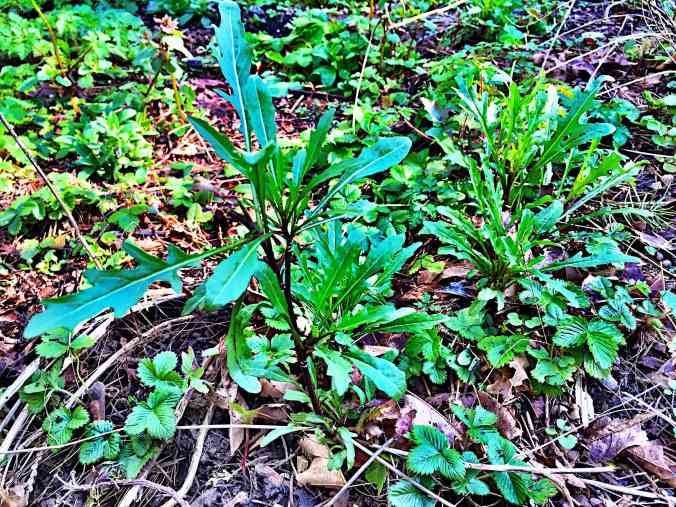
Strawberries: As in all berries, they’re a fruit of the earth that will come back year after year. The photo above shows how I’ve left some arugula in with the strawberries to commingle with each other this season.
Swiss Chard, Kale, Collards: I put chard in the same category as my kale and collards. If I just let them go to seed and sprinkle all of the seeds around, a few hardy plants will come forth in the spring. Here’s a beautiful specimen that volunteered itself this spring, right in with some corn mache.
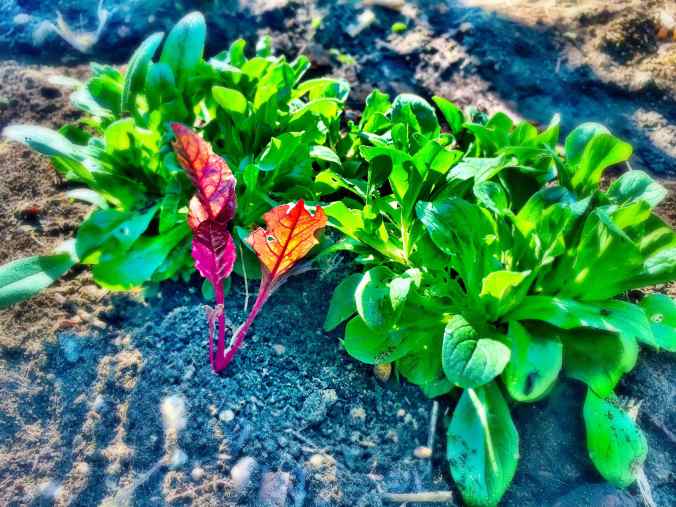
You never really need to buy kale, collard, or chard seeds if you just let them go to seed and replant themselves.
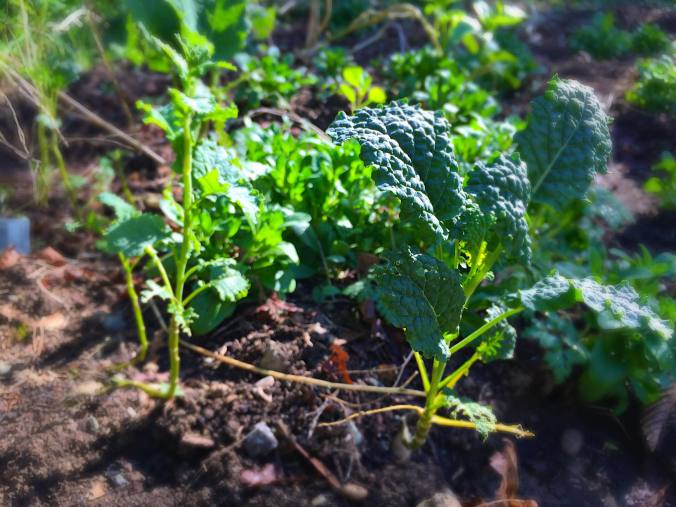
Mint: Mint always comes back, and you’ll likely have to whack it back a bit to prevent your whole garden from becoming a mintpalooza. Ours moves around a bit, but we let it stretch its legs because we’re perennial plant nurturers, and let our veggies do some walkin’ so they find their favorite spots to thrive.
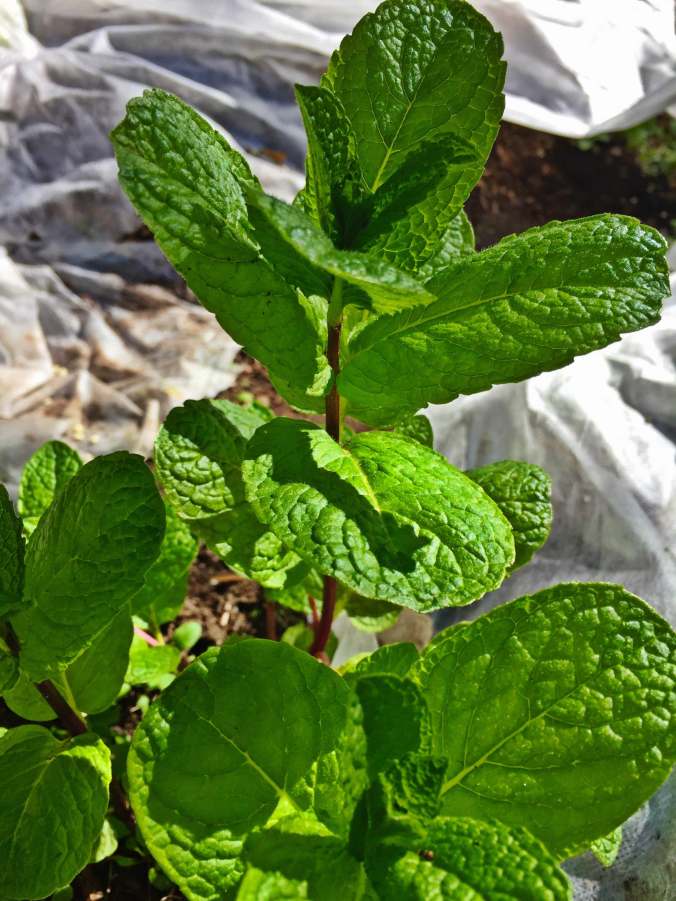
Potatoes: It goes without saying (but I’m saying it anyway) that when you plant potatoes, you’ll have them for life, in the same bed you originally planted them in. There will always be little taters you somehow missed during your harvest. And they’ll reappear next year to bring a smile to your face in the spring.
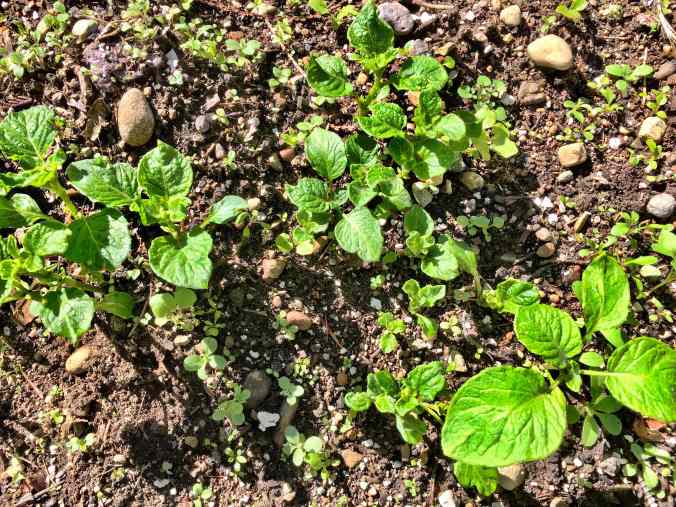
Asparagus: Another favorite. If you make the effort to dig a trench and get your asparagus planted, it’ll bring you joy each year once the plants are established.
Sorrel and Miners’ Lettuce: Two more heirloom category veggies that will rock your world. My friend, Rebecca, has these all winter long in her garden and she gladly shares her bounty with us. I never bother to plant them since she has so much to share. Check out her sorrel and miners’ lettuce pesto.
Rhubarb: Rhubarb is a vegetable, so I’m including it in my list of perennial veggies. Plant it once, and you’ll thank yourself for years to come. Rhubarb is versatile!
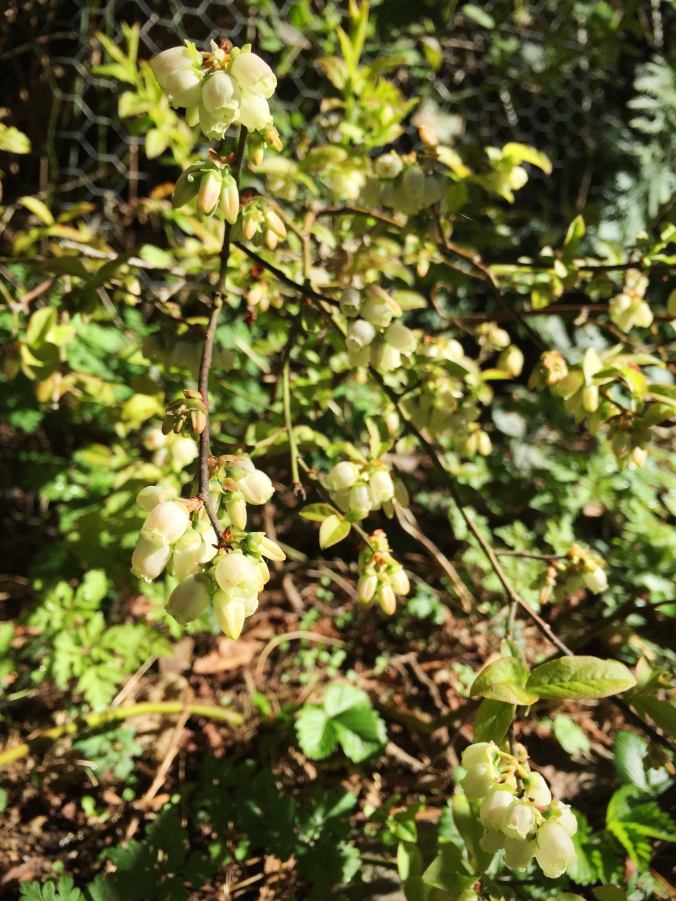
The welcome site of spring blueberry blossoms
So, enjoy your no-work perennial veggies. Your fruits, too, will come back year after year if you give them what they need (prunings, compost, water and love.) Our lives are so enriched by the blueberries, raspberries, kiwis, apples, plums, figs, blackberries, and gooseberries that ripen each year on our property. Veggies can, and will, do the same if you nurture them and allow them to find their sweet spot in your garden to flourish.
This is completely lovely. I would be truly honored if you wanted to share your journey on the Organic Gardener Podcast… :~))
LikeLiked by 1 person
Hi Jackie: What a nice request! I’d love to do it. Feel free to contact me via email at clark liesl at mac dot com. Many thanks!
LikeLike
Great post. The only one I’m not sure about is Jerusalem artichokes. I found them beyond invasive when I had them. I couldn’t keep them in order and soon had more than any reasonable family could ever eat. Have you got a space on your plot for perennial spinach?
LikeLiked by 2 people
Somehow we’ve managed to keep the sun chokes under control. Absolutely, we have space for perennial spinach! Which variety do you recommend?
LikeLike
Hmm. It’s a while since I’ve had a plot, but I seem to remember Spinach ‘Perpetual’ (Spinach Beet)
Beta vulgaris var. vulgaris did the business.
LikeLiked by 1 person
I’ve had the same problem with Jerusalem Artichoke and now trying very hard to suppress them in my regular garden. I am letting them do what they want in an area outside the garden. They become very invasive after a few years.
LikeLike
I love my corn salad (mache) also! I also have Rhubarb (a prairie standard as if you go to any old abandoned farmstead the only thing left is usual a huge rhubarb patch), walking onions, mint, and I let my Kale go also. I do agree about the jerusalem artichokes overtaking everything but it is very cool that you have been able to manage that 🙂
LikeLike
I think my trick, so far, with the jerusalem artichokes, has been to keep them in the most infertile spot in the garden. They aren’t all that prolific. But, let’s see when they come up this spring.
LikeLiked by 1 person
Pingback: 50 Things To Never Buy | Pioneering The Simple Life
Pingback: Corn Mache, The Sustainable Green | Pioneering The Simple Life